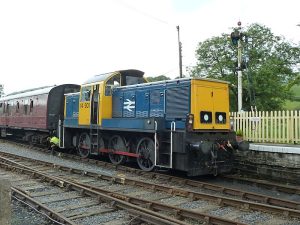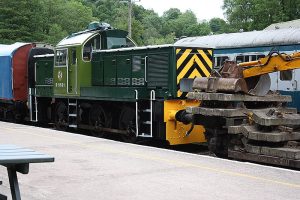Introduction
The British Rail Class 14 locomotive stands as a testament to the innovation and adaptability that characterized the mid-20th-century British railway industry. Designed and built during the 1960s, the Class 14 emerged as a versatile and reliable workhorse, serving a variety of industrial roles across the United Kingdom. In this article, we will delve into the history, design, performance, and legacy of the Class 14 locomotive.
History
The genesis of the Class 14 can be traced back to the early 1960s when British Railways sought to replace aging shunting locomotives. The requirement was for a compact, yet powerful locomotive suitable for various industrial applications such as freight yards, docks, and factories. The British Railways’ design team collaborated with the firm of Drewry Car Co. Ltd. and the Birmingham Railway Carriage and Wagon Company to bring the Class 14 to life.
Design
The Class 14 locomotive was a diesel-hydraulic design, featuring a robust 350-horsepower Paxman 6-cylinder engine. This powerplant, coupled with a Voith hydraulic transmission system, provided the locomotive with ample tractive effort and operational flexibility. The locomotive’s wheel arrangement, a 0-6-0 configuration, made it well-suited for shunting duties, where maneuverability and power were essential.
The locomotive’s compact size and low axle load allowed it to navigate tight curves and negotiate challenging track layouts with ease. The cab, situated at one end of the locomotive, offered the operator an excellent view of the surroundings, enhancing safety and efficiency during shunting operations.
Performance
The Class 14 locomotive quickly gained a reputation for its impressive performance and reliability. Its design allowed for efficient shunting in confined spaces, making it an ideal choice for the various industrial settings it served. The hydraulic transmission system provided smooth acceleration and deceleration, contributing to the locomotive’s overall ease of operation.
Despite its modest size, the Class 14 demonstrated a remarkable hauling capability. It was often deployed for short-haul freight services, showcasing its versatility beyond traditional shunting roles. The locomotive’s adaptability made it a valuable asset for railway operators looking for a cost-effective solution to their diverse operational needs.
Legacy
The Class 14 locomotive’s legacy extends beyond its years of active service. While the production run was relatively limited, with only 56 units built, the impact of these locomotives on the railway industry was significant. Many Class 14s found second lives in preservation and heritage railways after being retired from industrial service.
Preservation societies and rail enthusiasts recognized the unique characteristics of the Class 14, with several examples being meticulously restored to their original glory. These locomotives continue to operate on heritage railways, allowing new generations to experience the distinctive sound and power of the Class 14 in action.
The Class 14 also played a crucial role in the development of future locomotive designs. The lessons learned from its construction and operation contributed to the evolution of diesel-hydraulic technology, influencing subsequent generations of shunting and industrial locomotives.
Conclusion
The British Rail Class 14 locomotive stands as a symbol of ingenuity and adaptability in the history of British railways. Its design, conceived to meet the specific demands of industrial shunting, proved to be a success, and the locomotive left an indelible mark on the railway landscape. Today, as preserved examples continue to captivate rail enthusiasts and heritage railway visitors, the Class 14’s legacy endures, reminding us of an era when innovation and practicality converged to create a mighty workhorse of the rails.








